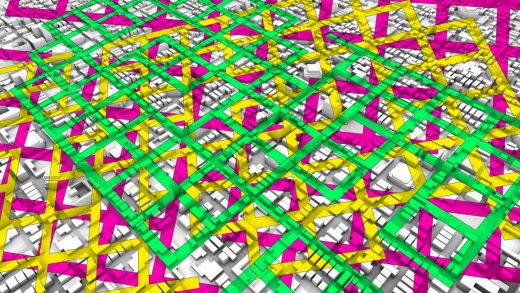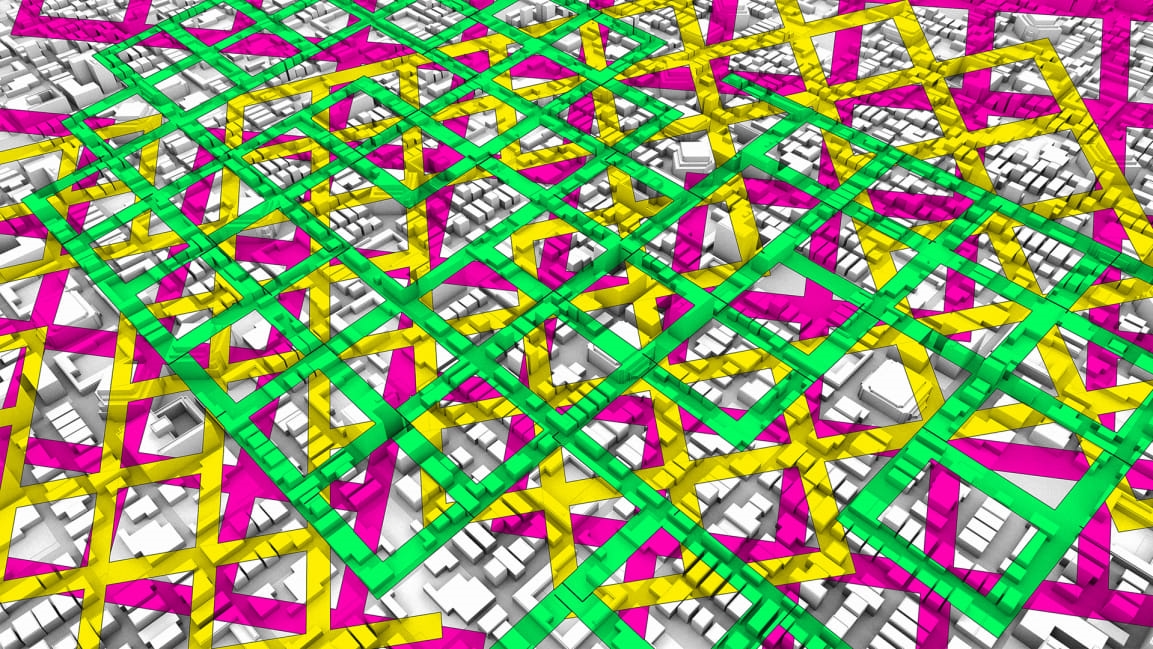What’s the best way to spend the $1.2 trillion in the infrastructure bill?
The American economy is underpinned by networks.
Road networks carry traffic and freight; the internet and telecommunications networks carry our voices and digital information; the electricity grid is a network carrying energy; financial networks transfer money from bank accounts to merchants. These networks are vast, often global, systems—but a local disruption can really block them up.
For example, the I-85 bridge collapse in Atlanta in 2017 snarled that city’s traffic for months. In 2019, a concrete beam fell from a bridge in Chattanooga, Tennessee, resulting in traffic shutdown on one of the nation’s busiest interstate intersections. And in 2021, Hurricane Ida crippled mass transit in New York City, with flash floods overcoming subway lines and trapping people overnight on trains.
As the U.S. government prepares to spend over $1 trillion on infrastructure projects over the next 10 years, it will be vital to identify which elements are the most crucial to repair or improve. This is important not only for maximizing benefits, but it’s also useful in preventing disaster.
Is there, perhaps, a telecommunication line whose destruction would be particularly damaging? Or one road through an area that has an especially large role in keeping traffic flowing smoothly?
Patrick Qiang and I are operations management scholars who have developed a way to evaluate network performance and simulate the effects of potential changes, whether planned—like a highway repair—or unexpected, like a natural disaster.
By modeling the independent behavior of all the users of a network, we can calculate the flow—of freight, commuters, money or anything else—across each link, and how the flow of other links will change. This lets us identify where investment will be most beneficial, and which projects shouldn’t happen at all.
More isn’t always better
It’s very difficult to measure networks’ performance, in part because they are so complex, but also because people use them differently at different times, and because those choices affect others’ experiences. For example, one person choosing to drive to work instead of taking the bus puts one more car on the road, which might get involved in a crash or otherwise contribute to a traffic jam.
In 1968, German mathematician Dietrich Braess observed the possibility that adding a road to an area with congested traffic could actually make things worse, not better. This paradox can occur when travel times depend on the amount of traffic. If too many drivers decide their own optimal route involves one particular road, that road can become congested, slowing everyone’s travel time. In effect, the drivers would have been better off if the road hadn’t been built.
This phenomenon has been found not only in transportation networks and the internet, but also in electrical circuits.
The U.S. shouldn’t waste time and money building or repairing network links that a community would be better without. But how can policymakers tell which elements help and which make things worse?
Calculating efficiency
The best networks can handle the highest demand at the lowest average cost for each trip—such as a commute from a worker’s home to their office.
Evaluating a network means identifying which locations need to be connected to one another, as well as the volume of traffic among specific places and the various costs involved—such as gas, pavement wear and tear, and police services keeping drivers safe.
Once a network is measured in this way, it can be converted into a computerized model with which we can simulate removing links or adding new ones in particular places. Then we can measure what happens to the rest of the network: Does traffic get more congested, and if so, by how much? Or, as in the Braess paradox, do travel times actually get shorter when a link is removed? And how much money does a particular project cost to build and save in time or user expenses?
Going global
Our method of measuring a network’s performance has been used to refine the route of a proposed metro line in Dublin, Ireland; to design new shipping routes in Indonesia; to identify which roads in Germany should be first on the maintenance list; and to determine the effects of road closures after major fires in regions of Greece.
Our method has also been applied to make supply chains more efficient, both to maximize profits and to speed disaster relief supplies to people in need.
As the U.S. works to enhance its economic competitiveness, we believe the country will need to invest in many different types of networks to maximize their usefulness and value to Americans. Using measurement methods like ours can guide leaders to wise investments.
This is an updated version of an article originally published on April 19, 2017.
Anna Nagurney is the Eugene M. Isenberg Chair in integrative studies at the University of Massachusetts Amherst.
This article is republished from The Conversation under a Creative Commons license. Read the original article.
Fast Company , Read Full Story
(48)



